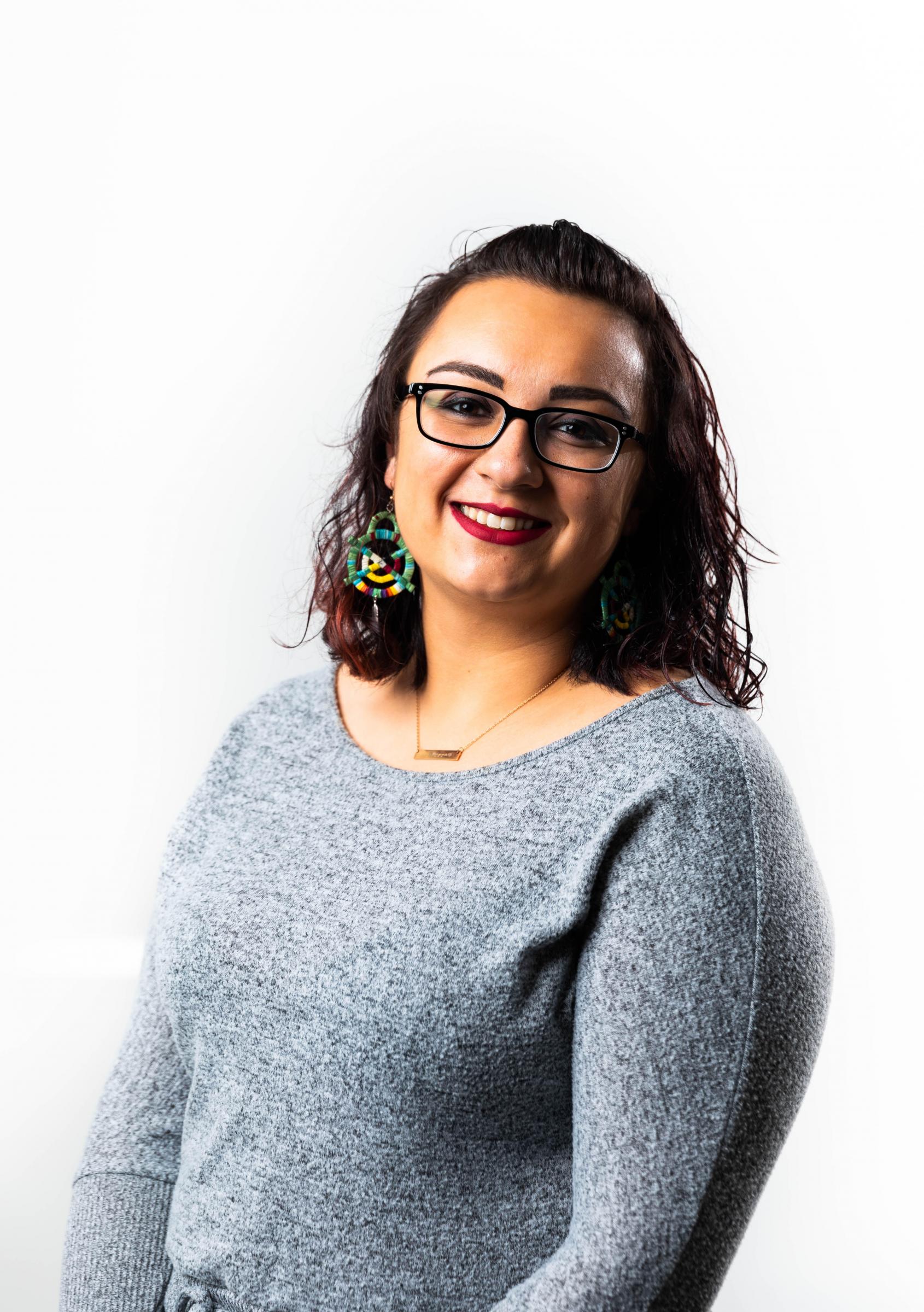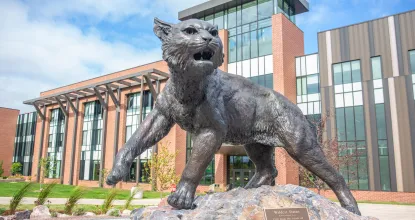
The NMU Center for Native American Studies welcomed new director Amber Morseau in December 2020. Here's an introduction to Amber from a recent issue of Northern Magazine:
Q & A with Amber Morseau
Incoming Director of the Center for Native American Studies
"Universities that have centers and academic programs focused on Native studies have the highest success rate for American Indian students.”
Can you provide a little background about yourself and about your professional life?
I am a Pokagon Band Citizen, Potawatomi, originally from the Ann Arbor area. I have a bachelor’s in psychology and anthropology and a master’s in educational leadership, higher education student affairs, both from Eastern Michigan University. Since then I have been the Native American Recruitment Coordinator at South Dakota State University, and later the American Indian Programs Coordinator. This time brought a lot of growth and inspiration to go beyond programming and recruitment, with a grant to conduct research to promote cultural connectedness to science in Storytelling through Science: Using Oral History and Chemistry to Revitalize Quill Working Societies, a project focusing on decolonizing curriculum in tribal schools and the rematriation of traditional knowledge in contemporary education. My family and I, Dominic and Dakota, and two dogs, Jax and Ellie, are excited to return to our traditional homelands.
What fears and struggles do you hear from students and youth in Native American communities?
One of the struggles I see is the lack of resources to succeed in higher education. These resources are not just in the classroom, they’re also counseling resources. American Indian students have the highest dropout rate out of any demographic in the United States. This number doubles if a student makes it to the college level. From my personal experience, I would have to say the hardest struggle is being seen in the classroom. There were not very many Native students in my school because in states with checker board reservations and larger urban populations, we resort to public schools for education. As Columbus Amber Morseau Incoming Director of the Center for Native American Studies day, thanksgiving, and pejorative mascots are still in our schools, our education system is inherently biased toward Native student success. As a result, our students are not seen as equals, or worse, assimilate to avoid being seen in order to succeed. When we break down stereotypes in our environment, students feel safe and supported, and this can be directly correlated to student success.
What are we doing well to support them and what ways can we improve, as a university and community?
Having a Center for Native American Studies and sacred sites on campus is a strong message. Many universities that have centers and academic programs focused on Native studies have the highest success rate for American Indian students. Indigenous faculty and staff are also critical in Native student success. In many conversations with students, part of the reason some individuals lack the confidence to apply or continue their education is because they don’t see others like them in positions of higher education. Finding a faculty mentor or a staff advisor who can identify with a student’s struggles or empathize with their experience can be a turning point for a student navigating higher education. In our communities we rely on the support of our relatives. We must create that same space in the university setting. Organic relationships are the center of my philosophy, I have an open door policy with students. I could be found in common spaces answering email just to be able to say “Hi!” to students, faculty and staff passing by.
Personally, why are you dedicated to working to create greater inclusion in higher education and deeper understanding of diverse cultures?
For me, I didn’t have the greatest experience in higher ed. I didn’t want other students to experience that same feeling. I remember when I was the president of our Native student organization at EMU, five of us were active in creating institutional change. We had a great time being activists, we created a lot of change, however it was a lot of work, a lot of hours and a lot of time taken away from studying. I’d like to think how much better my grades would have been had I spent more time in the books rather than in the streets. The point is, we needed advocates, and now I’m the advocate so I’m here to model the way as an administrator.
What plans and goals do you have for the Center for Native American Studies in the near future? What are some successes you are building on?
This can be a challenging question for me. I’m a dreamer, so when I get asked this question it can be easy for me to ramble on about all my hopes, dreams and realities for the center. In the near future, I would like to host a Tribal Education Departments National Assembly (TEDNA) conference to showcase the great work our faculty and students are doing. We have a TEDNA-accredited program, so this would have the potential to increase enrollment at a national level, providing a more diverse demographic and an increase in pan-tribal knowledge.
The Earth is facing inevitable change. The more Indigenous knowledge we have to try and save our mother and our people is not only a benefit, at the very least it will provide us a different view of stewardship. Native studies is becoming increasingly more popular because of this. This can be a connecting door for other disciplines by creating a space of collaboration. Using our traditional knowledge base collaboratively, we are able to rewrite the narrative of education for Native students, so that we may see higher success rates, increased interest in STEM fields and more higher degrees of learning.
How are you feeling about the many impactful events of 2020 and how our country can positively move forward?
I know “hopeful” is not the word many individuals are using to describe 2020, however considering that I have been hired in the middle of a pandemic, especially when academia is cutting down on the number of personnel due to Covid-19 and budget cuts, I feel hopeful. This is the time to renegotiate our professions. How do we collaborate? What resources do we have available and how can we expand our circle to be more inclusive to those who complement our strengths and fill the gaps where needed? We can no longer afford to think about ourselves. I think 2020 is the year of clarity, the year we all realize we need to do more.
Talking about these issues is difficult and sensitive. What can we do in our daily lives to gain a better understanding of each other?
It is difficult, it is sensitive, but growing pains are uncomfortable. Addressing privilege is the forefront of this. I know that’s a bold statement but it’s true. For too long society has considered ownership and capital as the only means to survival and prosperity—a very colonial mindset. However, if we collectively move toward decolonizing our education and learn to be a more holistic community base, we can thrive further into the future, and honestly be happier individuals. Since moving back home, I have found that I am happier here. Granted I haven’t seen my first winter as a resident of the U.P., but waking up every morning and working on my garden that I plan to share with everyone makes me feel whole. Not only am I sharing my love for education, but my love for the earth and all she shares with us.
What one book or film on these topics would you recommend to our alumni?
The novel There, There by Tommy Orange, and the film More than a Word by John Little. Both of these works focus on the contemporary issues being faced by Native folks. It’s a good place to start, however, this is a journey, not a sprint. It will take time and investment, and honestly, people’s feelings are going to get hurt. But these are just some of the current issues we face as a people, not to mention 500+ years of oppression and loss that had been forced into us.
